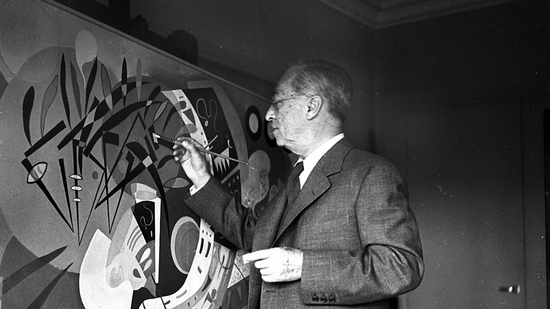
Wassily Kandinsky and abstractionism
One of the pioneers of abstract art, Wassily Kandinsky paved the way for succeeding artists in this artistic field. His paintings have been described as "visual music", as through color and line he expressed how music made him feel. Fascinated by the association between color and music, he even composed music for his works. The artist sought to provoke an emotional response in the viewer without the constraining influence of defined objects and physical boundaries. Discover in this article how Wassily Kandinsky, based on his works and theories, played a fundamental and surprising role in the narrative of abstractionism.

On the Spiritual in Art
The creator of the first modern abstract paintings, Wassily Kandinsky was an influential Russian painter and art theorist. He studied law and economics at the University of Moscow and later was employed as a professor of Roman law at the University of Dorpat in Estonia. At the age of 30, he began his studies in painting, focusing on drawings, sketches and anatomy, at the University of Munich. He was influenced by the compositions of Monet and Richard Wagner, in addition to anthroposophy. Devotion to inner beauty and their own personal experiences remained a central theme in their artwork. At this time Kandinsky wrote his famous theoretical work "On the Spiritual in Art", a classic text from the beginning of modernism, extremely precise on the considerations of the practical material of his artistic production, and especially on color, attributing particular emotional and "spiritual" qualities to each hue and proposing complex shapes in which contrasting colors can be balanced with each other. In 1914, after the outbreak of World War I, Kandinsky returned to Moscow. However, he did not find much artistic inspiration, so he returned to Munich, where he was a professor at the Bauhaus architecture school, until it was closed by the Nazis in 1933. As an art theorist, he published several books on art theory and developed a complex and profound study of the ability of colors and shapes to represent sound and show human emotions.

“The color is the keyboard, the eyes are the harmonies, the soul is the piano with many strings. The artist is the hand that plays, touching one key or another, to cause vibrations in the soul.– Wassily Kandisnsky
Music - and the idea of music - appears in all of Kandinsky's work, as is immediately apparent from the titles of his works: Compositions, Improvisations and Impressions. The Russian artist described in his books that color is not just a visual component but has a soul and can interact with each other and with the viewer. Kandinsky claimed to be able to "hear colors" and "see sounds". After the Bauhaus closed, Kandinsky moved to Paris, where he was virtually isolated from other Impressionist and Cubist painters. He ended up getting French citizenship and lived the rest of his life in this country. Kandinsky's works and theories had a great impact and influence on later movements like Abstract Expressionism.

Kandinsky's theory seen by new technologies
Now with the Play a Kandinsky platform, created by Google Arts & Culture in partnership with the French museum Centro Pompidou, it is possible to imagine Kandinsky's neurological condition, of associating colors with sounds. The painter had synesthesia, a condition that merged two or more senses of the human body. In his case, the mixture was visual-auditory: colors had sounds and, therefore, his paintings were like music. On this page you can also see the associations between colors and music that Kandinsky created.

